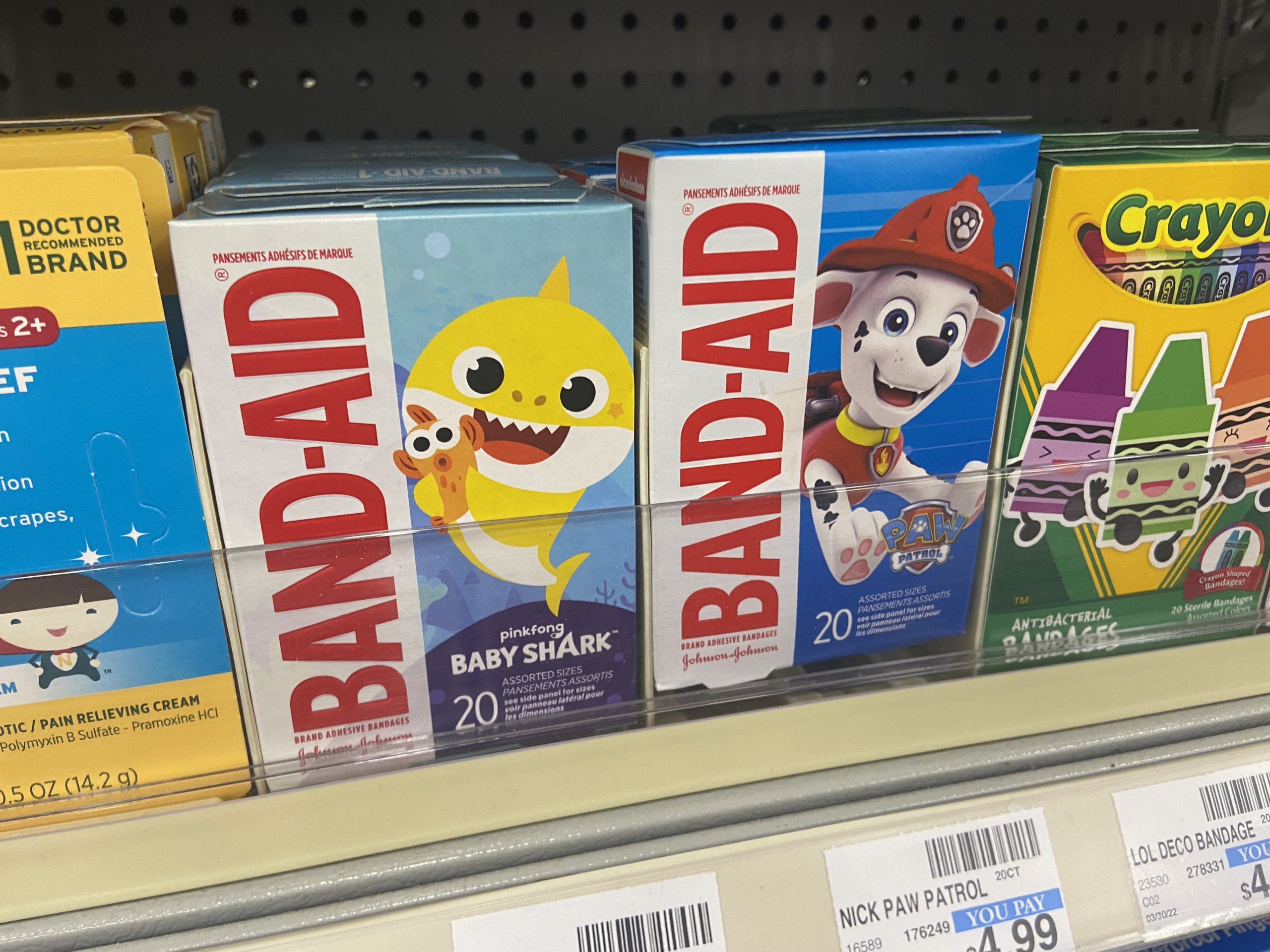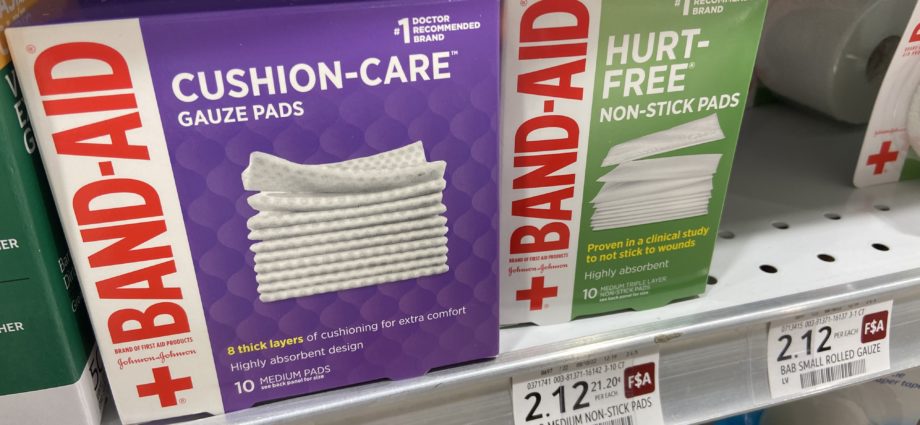NEW BRUNSWICK, N.J. – There are perhaps no American brands that are more trusted than Johnson & Johnson. A key part of the J&J brand identity, other than their blood red color and the trademark Johnson & Johnson script, is the company’s red Greek cross logo.
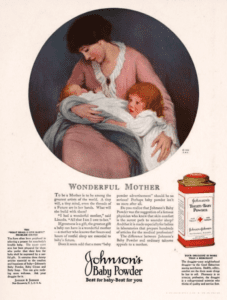
Since 1888, the company has used the Greek cross on products including Band-Aids, powder, gauze and other wound dressings. In recent generations, it has seen less and less use, however, as the company has grown and included more subsidiaries, with different names.
The red cross, however, is so fixed in people’s minds and associated with J&J that even when it is not used, it is still in the consumer’s heads.
End of Talcum Powder
This month, J&J announced that in 2023 it would end the sale of talcum based powders around the world.
Johnson’s Baby Powder, for a time, also bore the red cross logo, though it has not for at least half a century. Most Americans associate Johnson’s Baby Powder with a pink color, and a plastic white container.
The move came after years of trial lawyers going after Johnson’s talc products. Talcum has been safely used for thousands of years, but jury trials ended up a costing the company billions.
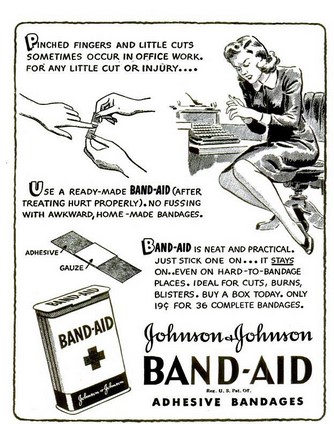
The verdicts in lawsuits ignored the simple fact that every single household in the U.S. has been a consumer of talcum powder. And that the natural substance talc has been used through all of history. And that soapstone, of which talc is a key and essential ingredient, has been used in every culture, and every occupied continent, since the beginning of civilization for food preparation, art and medicine.
Most companies are reformulating. For instance, Gold Bond Medicated Powder, which combined menthol and talc, now uses corn starch. The talc version was not only used by consumers at home; its anti-chafing properties were essential for military, on battlefield, and in sports.
Cross Symbol on Products
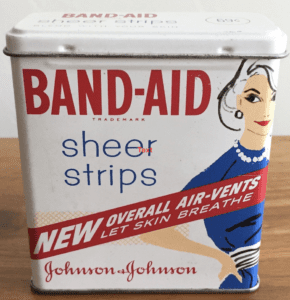
Today, the Greek cross is most associated in the consumer’s mind with Band-Aids and other wound care, and of course, the International Red Cross. However, Band-Aids have not always used the cross. Even decades ago, the Band-Aid name was sometimes used with other images, or in stylized fashion.
The Greek cross, with symmetrical arms, has pre-Christian origins, and is associated with the mathematician Pythagoras. It was later used by the Eastern church, the equal arms (crux quadrata) symbolizing the wideness of the church in general. This contrasted with the Latin or Western cross, with unequal sides.
The Hal Morgan book Symbols of America (Penguin, 1986) details the history of the logo. Morgan wrote:
“Clearly this is a valuable asset in a business so closely related to health care. The American Red Cross Society also has a strong claim on the symbol, as it has been used since 1863 by the International Committee of the Red Cross. Since this use is protected under the Geneva Convention, Johnson & Johnson has had to maintain a tight grip on the cross through some buffeting legislation.
Hal Morgan, Symbols of America
One of the earliest products of J&J were antiseptic surgical dressings. It was the products like this, according to Morgan, that saw the company through the 1906 Pure Food and Drug Act. The act clamped down on patent medicines, and crooked and dangerous medical claims.

The J&J red cross has not been traditionally seen in annual reports, at least since 2000. Only the familiar red Johnson & Johnson script, and lots of red. And as Johnson & Johnson has reduced the number of bandages it sells in pharmacies, the red cross has appeared on fewer and fewer packages and products.
Last November, J&J announced that it would spin off the consumer products arm of the company. As yet, the company has not been named, though the pharmaceutical and research part will keep the J&J corporate brand. Product brands like Neutrogena, Aveeno, Tylenol, Listerine and Band-Aid in J&J’s Consumer Health segment generated approximately $15 billion in sales in 2021. The move is not risk free; the earnings of the consumer unit are dependable, even if with some tort issues.
The question becomes, however, what will happen to the J&J red cross after the breakup. And what will the new company be called?
Historic Symbol for Red Cross
The Red Cross logo has also appeared on other commercial products. In 1986, according to Morgan, these products included Red Cross shoes, Red Cross salt, and Red Cross Nurse disenfectant. Currently, Red Cross Toothache, a product of The Mentholatum Company, uses the red cross design promimently.
The website of the International Red Cross delineates how they divide the trademark among commmercial companies. And what the special consideration means for companies:
Countries around the world protect the red cross emblem and limit its use to official Red Cross organizations and programs, as well as the medical services of their armed forces. In the United States, only the American Red Cross and the medical corps of the Armed Forces are permitted by law to use the red cross emblem. Some U.S. companies were granted an exception that were already using the emblem before 1906. Use of the red cross emblem by anyone else is not only prohibited, but also unlawful in the United States and around the world.
Red Cross Emblem Symbolizes Neutrality
In 1945, the Senate passed a bill to fully implement the Geneva Convention, but the House of Representatives defeated it, according to Morgan.
The Red Cross and Red Crescent are not the only names for the International Red Cross. In 2005, the red crystal (yes, it’s a thing) was adopted by a Diplomatic Conference of States Party to the Geneva Conventions. Some countries thought the other emblems too religious.
The six sided, blue star of life, seen on emergency services trucks, only dates from 1963, created by the American Medical Association.
- Interested in the history of Johnson & Johnson? The company has a comprehensive news site at ourstory.jnj.com, that details the multi-faceted history of the brand. Items include stories of Johnson & Johnson First Aid Kits over the years.
Below, some views of Band-Aid products, and the J&J red cross, in grocery and pharmacy aisles today.
